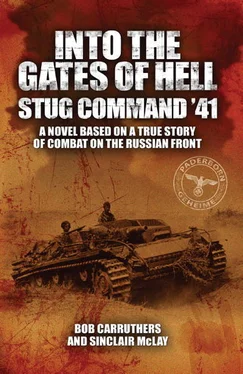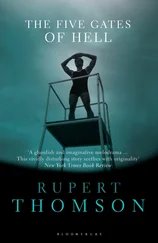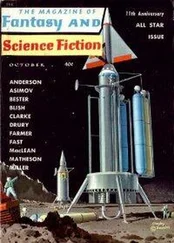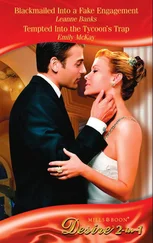As the Germans advanced everywhere along the front the surprised Russian forces were pushed further and further back, and the prospects for the fortress grew dimmer. The aerial bombardment of Brest-Litovsk represented one of the dramatic climaxes of the opening day of Barbarossa. As Rossheim guided his squadron back to the fortress for the third sortie of the morning all hell seemed to have broken loose there. Furthermore, it was clear that this time he and his men were not alone. A large formation of conventional He-111 bombers was approaching the target just ahead of the Stukas. The bombers dropped their deadly loads on the doomed fortress. For them it was hardly necessary to take accurate aim over the fortress and it was anyhow practically impossible to do so, owing to the dense pall of smoke in which the fortress was continually enveloped. The crews of the Heinkels simply carried out their instructions to the letter.
To the consternation of the Stuka pilots, they simply discharged their full payload and began to turn for home. The Heinkel crews obviously reasoned that every bomb was certain to score a hit because, in theory, the Russians were still in control of the fortress.
The reality on the ground, according to the latest intelligence coming from Leutnant Vogel, who was performing in a liaison role with the German forces attacking the fortress, was that the Ivans were indeed being confined into smaller and smaller areas under the relentless weight of the German attack and that the free space at their disposal was steadily growing less. From Vogel’s reports Rossheim understood that the surviving Red Army troops were now all crowded together into three main islands in the narrow space of the fortress. Every defensible position in those islands was crammed full of soldiers and the streets and parkland were congested with troops and vehicles, but now the problem from the air was to ensure that all bombs fell only on the surviving defenders. According to Vogel, both sides were now hopelessly intermingled as men fought to the death with bullets, grenades, bayonets and their bare hands.
In light of this information the dive-bomber crews therefore made a careful observation over the fortress of Brest-Litovsk. The blazing oil tanks which had serviced the many tanks and vehicles were the chief source of the enormous clouds of dense black smoke which billowed into the sky and fell back to form the impenetrable pall of smoke lying over the fortress. When Rossheim and his squadron appeared back over the target, everything was at first black with smoke. Nothing was to be seen at all, visibility simply did not exist. Potential targets could only be made out dimly after having pierced the top layer of smoke and descending to the lowest levels, where the smoke from ground fires, explosions and gunfire was sometimes possible to see through, but it was impossible to tell from the fleeting glimpses whether the figures on the ground were German or Russian. There was a complete absence of ground recognition signs. No orange smoke, no yellow cloths, no swastika flags.
Despite the fact that the situation on the ground was so unclear, fresh waves of He-111 bombers kept on coming. It seemed as if the full might of Luftflotte 2 had been focused on the fortress and once the machine had been switched on there seemed to be no way of switching it off. The bombardment of the fortress of Brest-Litovsk from the air was now so concentrated that the Stuka pilots searching for targets beneath the conventional bombers had literally to be on guard to ensure that they did not get a bomb in the neck from a Heinkel flying above them.
The approach to that last bulwark had long since ceased to be a problem. Even hidden by banks of smoke the fortress of Brest-Litovsk could not be missed. Hostile aircraft were no longer to be observed over the fortress, only German planes were now to be seen. More groups of Heinkel horizontal bombers of the He-111 type passed above the dive-bombers and the pilots and gunners of the latter could then only watch and call out in frustration at the bombs indiscriminately dropping from all the bomb-wells of these formations.
* * * * *
On the ground it was the StuG battalion that bore the brunt of the indiscriminate bombing. As they approached the Terespol gate the first flurry of death from the bombers flying high above hit Kampfgruppe von Schroif. A stick of bombs landed with devastating force and the number 4 gun from the First Abteilung was thrown into the air by the force of the blast from a direct hit which blew the gun to pieces and left a huge crater. Just in the very nick of time von Schroif threw himself down into the interior of number 1 gun.
“Get on to Vogel and stop those idiots… can’t he see what’s happening?”
Vogel could indeed see what was happening. He was up with the action and was crammed, along with his own radio equipment, into the Beobachtungskraftwagen which von Schroif had vacated to join number 1 gun. Wohl was about to reach for the radio set and pass on his superiors grievance when there was the report of another huge series of explosions as a further stick of bombs landed nearby. The blasts rocked the vehicle and splinters could be heard rattling on the armour. Miraculously, none penetrated the thin armour of the roof and sides of number 1 gun. Number 5 gun of the third abteilung was not so lucky. A large shard of metal cut through the side of the fighting compartment, instantly killing the gunner and commander and forcing the two surviving crew members of the damaged gun to radio that it was falling out of the action.
Through his driver’s vision port Junge could see that, from the force of the explosions, the command half-track had been pushed off the road and rammed up against a building. The machine wasn’t altogether destroyed, but smoke was now issuing from the engine compartment. The crew began to scramble out and Junge could just about make out the figure of Leutnant Vogel who seemed to be unsteady on his feet as he staggered into cover behind a brickwork chimney breast, all that remained of a vanished wooden building. As he did so, a bullet ricocheted off the brickwork. Vogel made himself as small a target as possible and cowered behind the masonry.
“It’s no use, the Beobachtungskraftwagen has been hit. They are bailing out,” announced Junge, who was keeping the stricken vehicle under close observation.
The next to follow Vogel was SS-Oberkannonier Schultz. As he reached the ground a single shot rang out from the same direction as the bullet which had so nearly claimed Leutnant Vogel. This time there was no mistake. Schultz was spun around by the terrific force of the round and fell lifeless to the ground.
“Sniper!” called Junge. “He got Schultz. He’s after Vogel.”
“I see him,” von Schroif said with a calm voice. He had traced the trajectory of the first bullet and had spotted the tell-tale wisp of smoke from behind an impossibly small pile of rubble.
“He’s lying prone, behind those bricks at ten o’clock, two hundred metres.”
Without waiting to be asked, Wohl loaded a high-explosive round, the granatpatrone 34 . As he did so, Junge swung the StuG around to the appropriate facing and Knispel lined up the shot. By his own calculation he made the range one hundred and eighty metres. Rather than ask for a correction, he took the adjustment on his own initiative. He had to be quick, the lives of three men depended on his speed and accuracy. Just as he was about to fire he was distracted by an almighty explosion. The number 4 gun from the Second Abteilung had attempted to fire a round at the same target but what the crew hadn’t known was that a shard of shrapnel had smashed into the short barrel of the main gun. It triggered the premature explosion of the round as it left the barrel. The untimely blast had completely destroyed the gun.
Читать дальше












